Related Research Articles

The Schleicher ASW 15 is a single-seat sailplane designed in 1968 by Gerhard Waibel and manufactured by Alexander Schleicher GmbH & Co. The ASW 15 has shoulder-mounted wings and an all-flying tailplane, with its single tow-release placement a compromise between winching and aerotowing. The later ASW 15B had several improvements, including a tow-release placed on the plane of symmetry, an 11 cm taller rudder, a slightly larger main wheel, and the provision of a 90-litre water ballast system.
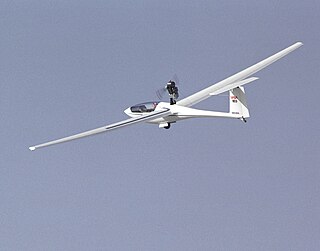
The PIK-20 sailplane was designed at the Helsinki University of Technology by Pekka Tammi, with advice from Ilkka Rantasalo and Raimo Nurminen. The prototype first flew on 10 October 1973. It was produced initially by Molino Oy who were taken over by Eiri-Avion Oy between 1974 and 1980. Later, production was taken over by the French company, Siren SA, under the name Siren PIK-20.

The Valmet PIK-23 Towmaster or Suhinu is a Finnish two-seater glider-towing/primary trainer aircraft built entirely out of composite materials in the early 1980s.

The Zlin Z-37 Čmelák, also known as LET Z-37 Čmelák is an agricultural aircraft which was manufactured in Czechoslovakia. It is powered by a Soviet-built Ivchenko reciprocating engine. The aircraft is used mainly as a cropduster.

The PZL-105 Flaming (flamingo) is a Polish short-takeoff-and-landing (STOL) utility aircraft designed by PZL "Warszawa-Okęcie". It remained a prototype.
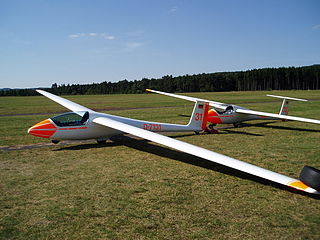
The Schleicher ASK 23 is a single-seat Club Class sailplane that was built by the German manufacturer Alexander Schleicher GmbH & Co.

The IAR-824 was a utility aircraft built in Romania in the 1970s.
The ICA IS-32 is an open class high-performance metal two-seat sailplane produced in Romania in the 1970s. A refinement of the IS-28B, it shared most of that aircraft's fuselage, mated to new wings and empennage. This new wing had a span of 20 metres, featuring interconnected ailerons and flaps, Schempp-Hirth-type airbrakes. It had no provision for water ballast. The monowheel undercarriage differed from the IS-28 in being fully retractable.
The PIK-3 was a sailplane produced in Finland in the 1950s and 60s. It was designed to be a cheap and easy-to-build aircraft to equip the country's gliding clubs as their standard single-seat machine. It was a conventional design for its day, with a high wing and conventional empennage. Construction was of wood throughout, skinned in plywood.

The PIK-5 was a training glider produced in Finland in the 1940s, and 1950s, equipping the country's gliding clubs with an aircraft greater in performance than primary gliders but less than competition sailplanes.

The Harakka was a primary glider produced for pilot training in Finland in the 1940s. Its design was typical of this class of aircraft, a "keel" with a pilot's seat suspended beneath a high, strut-braced monoplane wing, and carrying a conventional empennage at the end of an open framework. First flown in February 1945, the type was built from plans by Finnish gliding clubs and soon replaced earlier primary gliders such as the Grunau 9, becoming a standard piece of equipment in the clubs.
The PIK-13 was a sailplane constructed in Finland to compete in the 1954 World Gliding Championships, held at Camphill Farm, Great Hucklow, UK. It was a conventional mid-wing design of "workmanlike" construction and underwent five test flights in the course of 1954 before its entry in the competition.
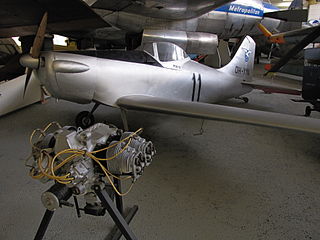
The PIK-11 Tumppu ("Mitten") was a single-seat, single-engine sport aircraft developed in Finland in the 1950s. It was a low-wing, cantilever monoplane of conventional design with an enclosed cockpit and fixed, tailwheel undercarriage. It was to be the first powered aircraft produced by Polyteknikkojen Ilmailukerho, with the objective being building an aircraft for club use that was cheap to build and easy to fly.

The PIK-15 Hinu was a light aircraft developed in Finland in the 1960s for use as a glider tug. It was a low-wing cantilever monoplane of conventional design with an enclosed cockpit and fixed, tailwheel undercarriage. The cockpit had two seats, side-by-side, and the PIK-15 was intended to have a secondary role as a trainer. Construction was of wood throughout.
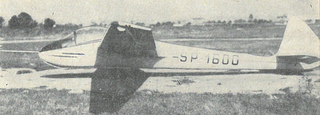
The SZD-11 Albatros was a single-seat glider aircraft that was designed and built in Poland at Szybowcowy Zakład Doświadczalny - Glider Experimental Works in Bielsko-Biała in 1954. Only one prototype was completed and flown.

The Akaflieg Berlin B13 is a two-seat motor-glider designed and built in Germany.

The Lehtovaara PIK-16 Vasama is a Finnish mid-wing, single-seat, FAI Standard Class glider that was designed by Tuomo Tervo, Jorma Jalkanen and Kurt Hedstrom, who were students at the Polyteknikkojen Ilmailukerho (PIK) and produced by Lehtovaara.
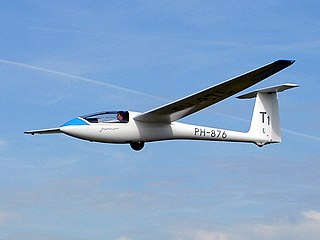
The PZL Bielsko SZD-51 Junior is a Polish single-seat training and club sailplane.
The Civil Aviation Department MG-1 was a one-off Indian motor glider, seating two side by side and first flown in 1983.
The Nippi NP-100 Albatross was a Japanese two side-by-side seat motorized glider, powered by a ducted fan rather than the usual propeller. It did not go into production.
References
- "Finnish Newcomer". Flight International : 1900. 8 December 1979. Retrieved 2009-01-13.
- "PIK-sarjan lentokoneet". Polyteknikkojen Ilmailukerho website. Retrieved 2009-01-12.
- Taylor, John W R (1974). Jane's All the World's Aircraft 1974-75. London: Jane's Yearbooks. ISBN 0 354 00502 2.
- Taylor, Michael J. H. (1989). Jane's Encyclopedia of Aviation. London: Studio Editions.
- Tervamäki, Jukka. "Projects in Various Organizations". The Home Page of Jukka Tervamaki. Retrieved 2009-01-13.